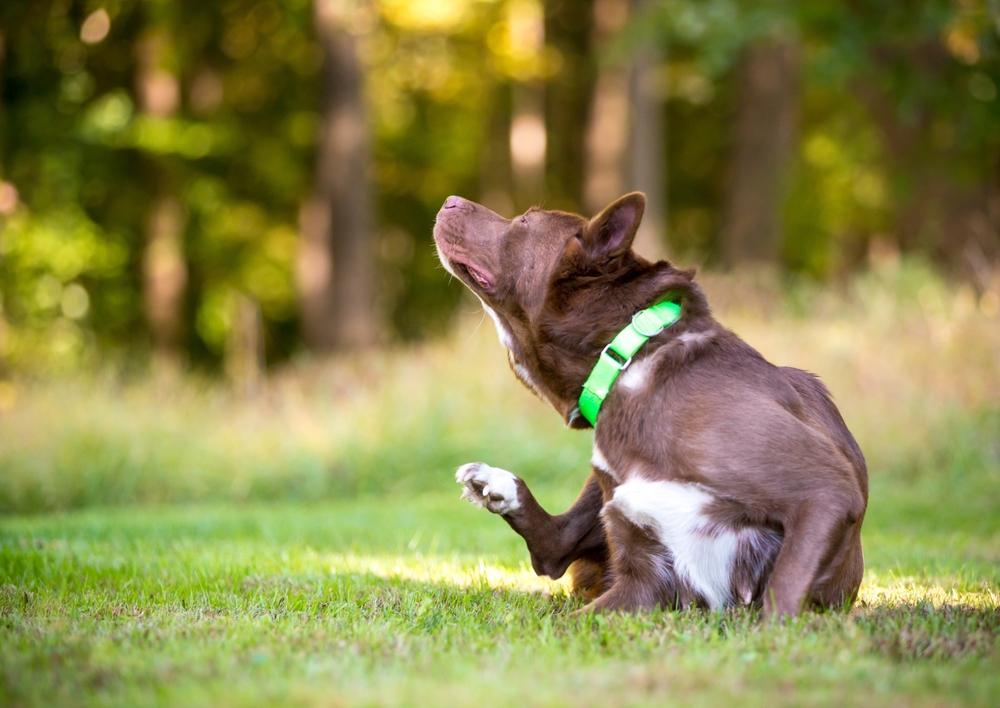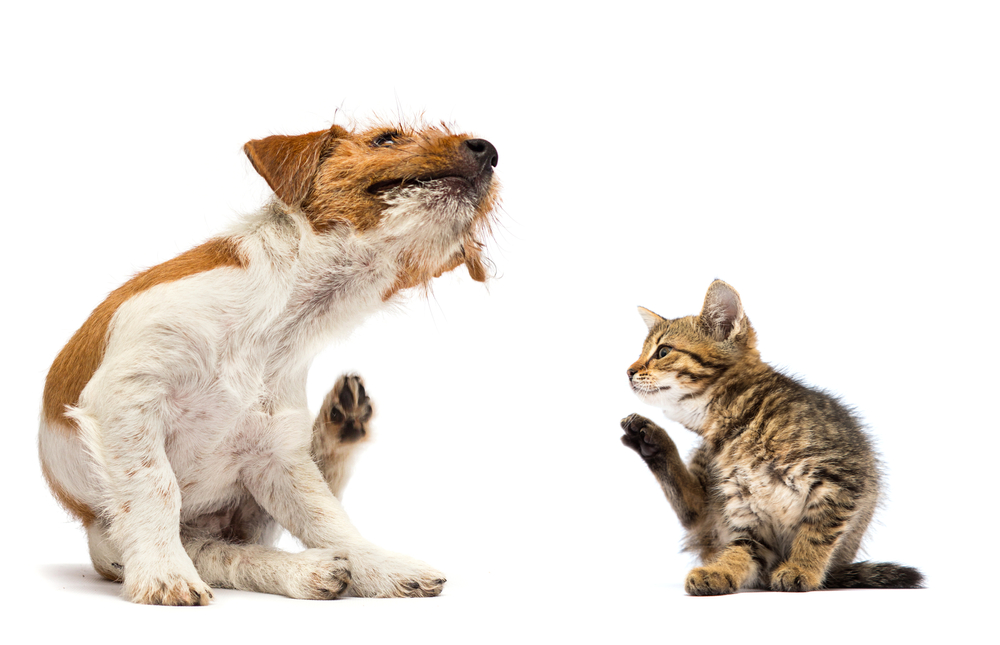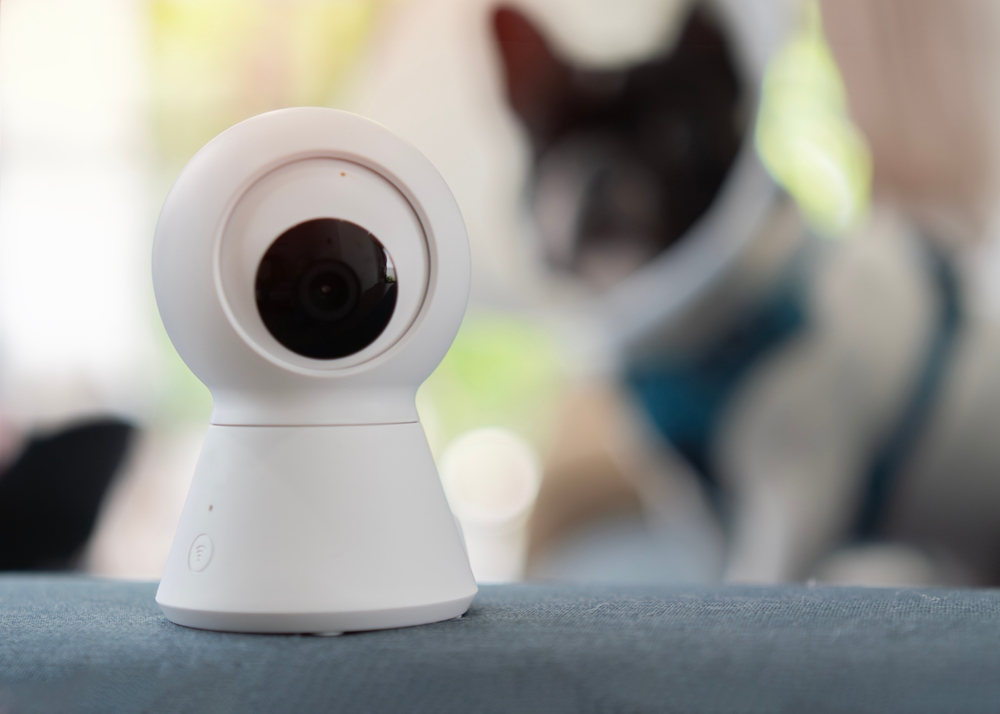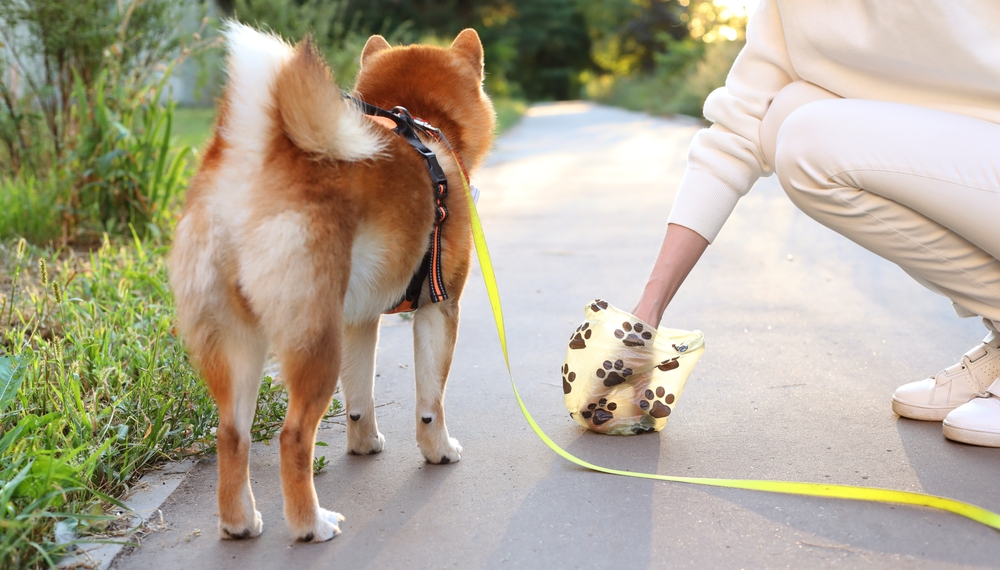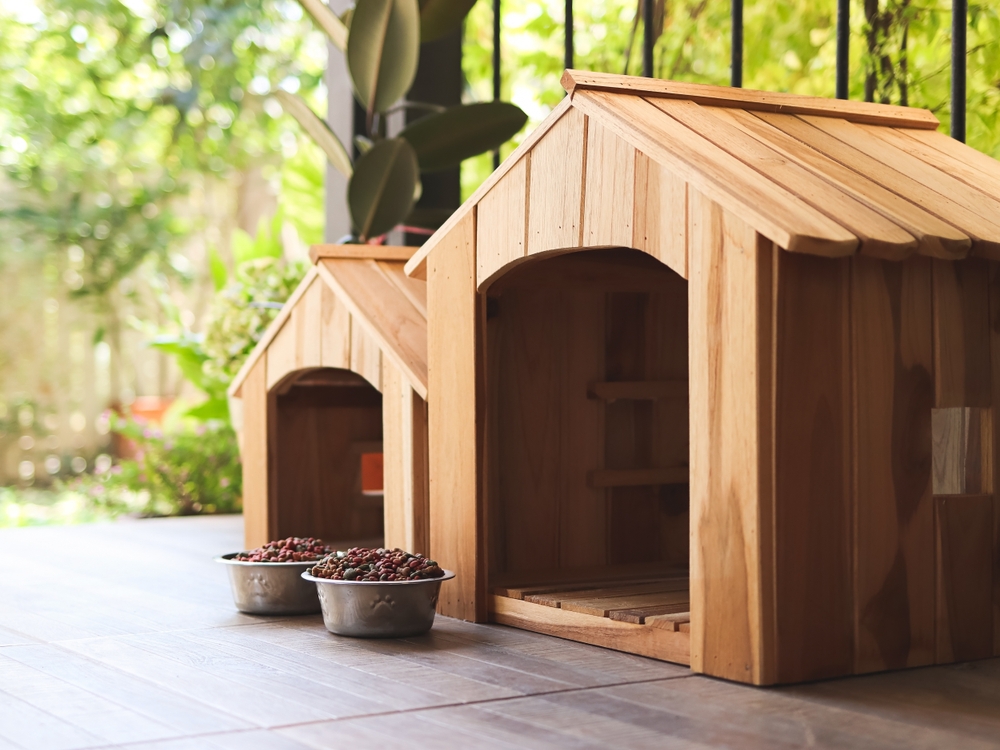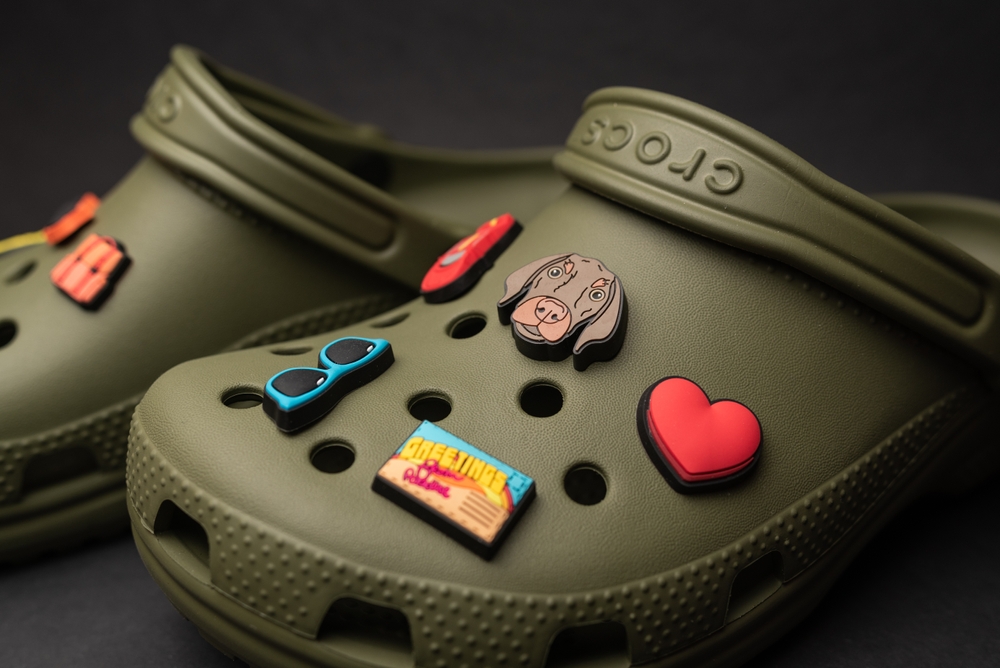8 Dog Winter Coats for Keeping Warm in Cold Weather
Published on October 04, 2022
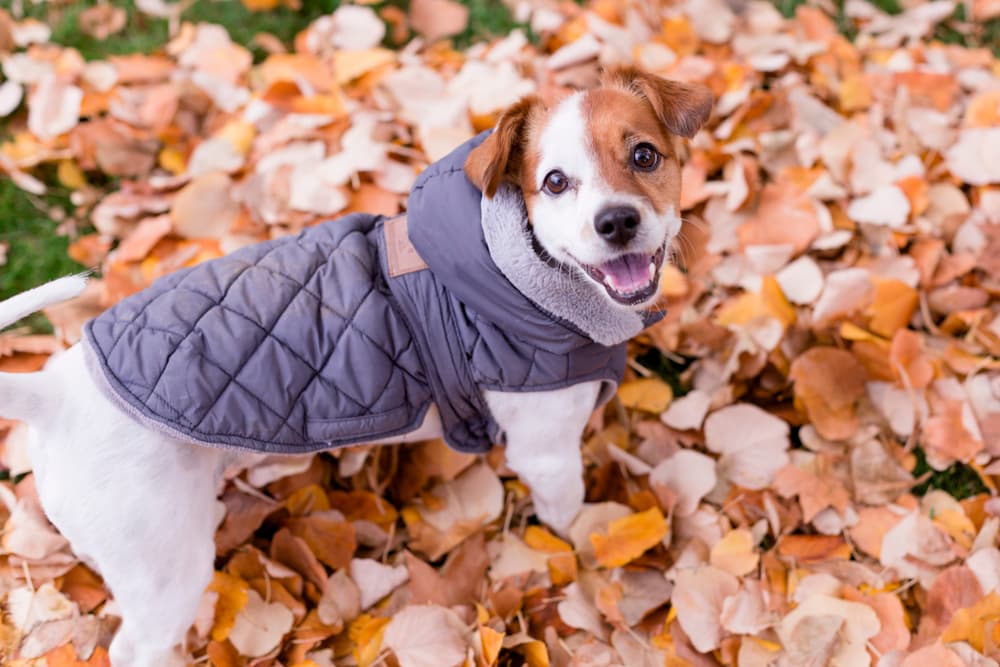
When the weather outside turns frightful (or even just a bit nippy) it’s the perfect excuse to bundle up in a warm winter coat. And that goes for your dog, too! Even though dogs sport their own furry coats, some of our pups need a little extra help staying warm during winter weather. In many regions, a winter dog jacket may be absolutely essential. In others, it’s just downright adorable.
The market for pet clothing is booming, and sales don’t show any signs of slowing down, with protective and warming pet clothing like sweaters, hoodies, jackets, and coats growing ever more popular among pet parents.
Whether you’re in the market for an affordable jacket to shield your canine from occasional flurries or a durable winter dog coat that can stand up to extreme winter weather, we’ve got your back. To make those decisions a little easier, we’ve rounded up eight of the best dog winter coats to get you started.
Do Dogs Need Coats in Winter?
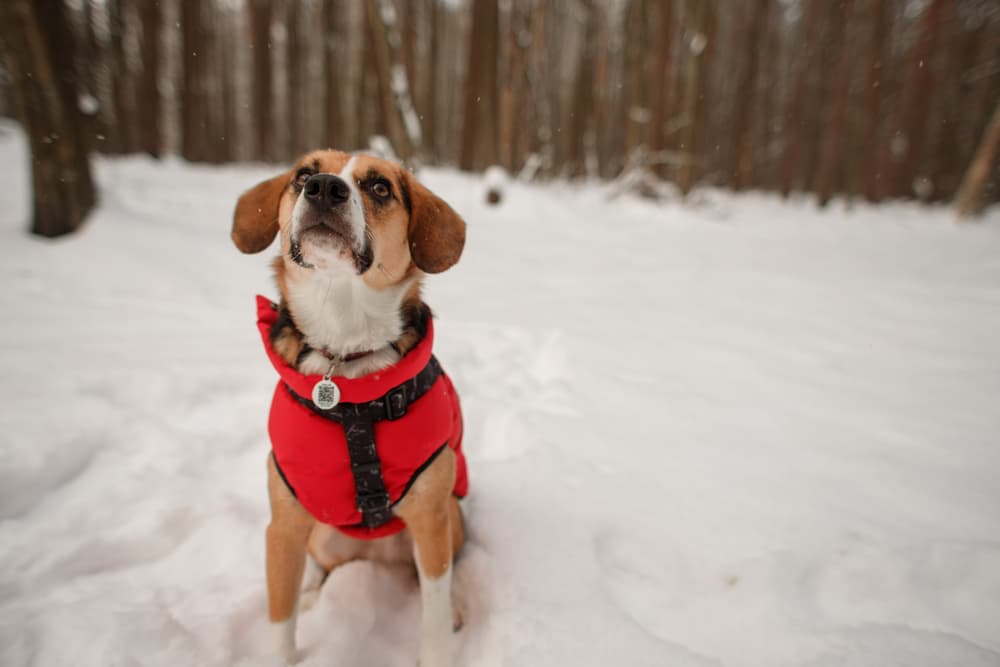
Despite their built-in fur coats, dogs aren’t immune to the cold. In fact, if bitter winter weather is making you uncomfortably cold, your dog is likely feeling it too.
However, there’s no one-coat-fits-all answer about winter coats for dogs, because there are a lot of factors at play.
According to dog trainer Steffi Trott, founder of SpiritDog Training, whether or not your dog needs a winter coat largely depends on three factors:
- their ability to stay warm (which is often influenced by their breed, age, coat, etc.)
- the temperature, precipitation, and wind chill where you live
- their activity level
“Some breeds are born to feel comfortable in the cold,” Trott says. “Dogs like huskies, Great Pyrenees, or Saint Bernards have a thick double coat that keeps them cozy, even in very low temperatures.”
“If your dog is a healthy adult of a northern breed or a livestock guarding dog, chances are they will not need a winter coat,” she advises.
“On the other hand, there are many breeds with a single coat or a medium-to-thin double coat. For these, a winter coat might become necessary. This is especially the case for puppies under six months old or senior dogs. Their ability to regulate their body temperature can be limited, and they get cold faster,” warns Trott.
“Also, if your dog has a single coat or a thin double coat, they might get cold very quickly if it is raining or snowing,” she says. “In this case, they should absolutely wear a waterproof coat.”
It’s also important to think about the kinds of activities your dog might undertake while wearing a coat. “Remember that a dog who is actively moving is less likely to become cold than a dog who’s standing still or even lying down in the cold,” Trott says.
”For example, a high-energy breed with thin fur like a Doberman might be completely fine on a brisk 30-minute walk through the snow without a winter coat. On the other hand, if the same dog were to be left out in the yard, standing around in the snow, they would get very cold very quickly!” says Trott.
How We Ranked Our Top Winter Coats for Dogs
When considering dog coats and dog jackets for winter, we looked at factors like comfort, durability, and pricing to help us decide which options to feature as our top picks. We took into account our experience as pet parents — both of dogs who love a cozy coat and others who definitely don’t need or want them! We also consulted experts for their advice, in addition to checking out customer reviews for each and every product.
All featured products are chosen at the discretion of the Vetstreet editorial team and do not reflect a direct endorsement by the author. However, Vetstreet may make a small affiliate commission if you click through and make a purchase.
Our Picks: Top Dog Coats for Winter
Ready to discover the best winter coats for dogs? From adorable winter raincoats to warm puffer jackets and heavy-duty winter coats for dogs, here are our top eight picks for keeping your pup warm and protected in cold weather.
Our List
- Best Overall Dog Winter Coat: Pendleton National Park Dog Coat
- Best Winter Dog Coat for Large Dogs: Carhartt Insulated Dog Chore Coat
- Best Winter Dog Coat for Small Dogs: Kurgo North Country Dog Coat
- Best Waterproof Winter Dog Coat: WeatherBeeta Parka Deluxe Dog Coat
- Best Heavy Duty Winter Dog Coat: Hurtta Extreme Warmer Winter Dog Coat
- Best Winter Dog Coat Splurge: Winter Dog Coat by Voyagers K9 Apparel
- Best Value Winter Dog Coat: Vecomfy Extra Warm Dog Winter Coat
- Best Dog Puffer Jacket: Reddy Puffer Dog Vest
8 Best Dog Coats for a Warm and Cozy Winter
Best Overall Dog Winter Coat
Our Pick: Pendleton National Park Dog Coat
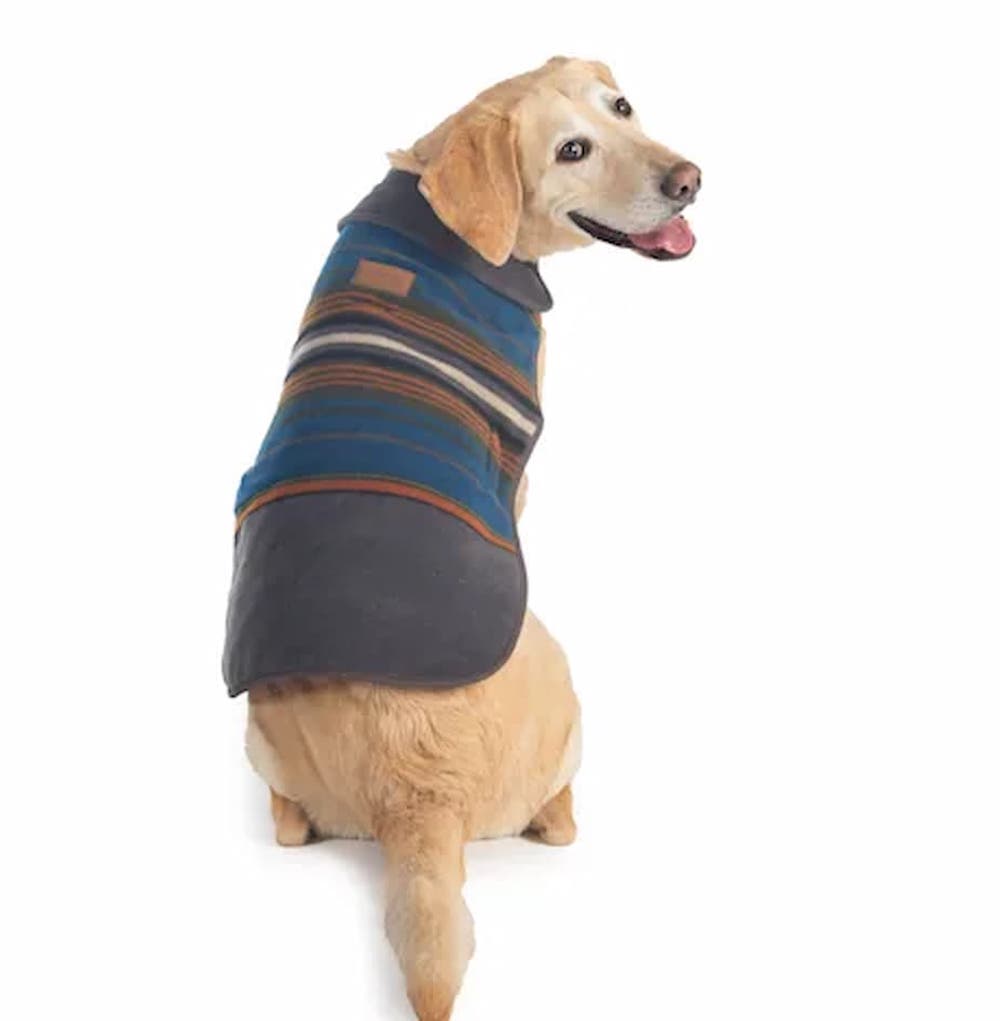
Pendleton is a well-known, family-owned brand famous for premium-quality blankets, coats, and apparel, so you know you’re getting the best of the best in warm canine outerwear. Part of Pendleton’s National Park collection, this eye-catching dog coat features stripes in the stunning colors of the Olympic National Park — although you can also choose from plenty of other colorways if another park is your favorite! But style is only part of the appeal. Made of warm, washable, non-pill polar fleece to keep your pup snug and cozy, this coat also features an inner layer of soft, quilted cotton canvas. And if you fancy a change, this coat is reversible for a totally different look! If you love coordinating your dog’s accessories, Pendleton also makes beds, collars, leashes, and more!
Highlights
- Comes in five sizes
- Plenty of stunning designs to choose from
- Machine washable
- Reversible
- Adjustable hook-and-loop belt secures the coat
- Includes an opening to attach leash to collar or harnesses
Things to Consider
- Not waterproof
- Does not cover or protect legs
Best Winter Dog Coat for Large Dogs
Our Pick: Carhartt Insulated Dog Chore Coat
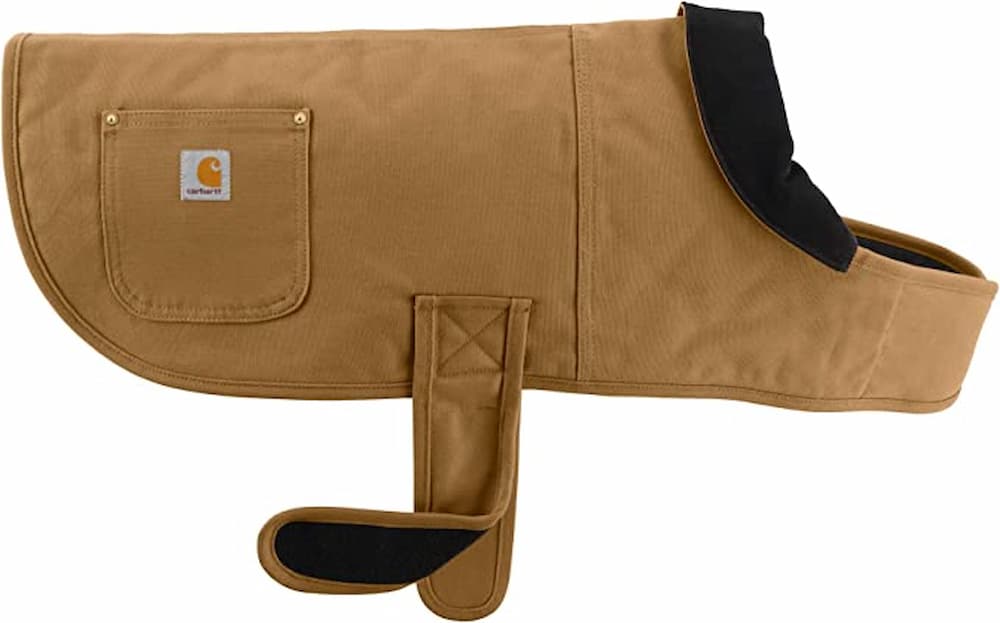
This best-selling dog coat has a classic look that echos the durability and hard-working design the Carhatt brand is known for. So your dog will look great while staying warm, at work or at play. Featuring heavy-duty, ring-spun cotton duck canvas designed for hard work and wearability, plus a plush microfleece lining to keep your pup warm and cozy. The wide belly strap is easy to adjust while the stretch panels add comfort. This coat even comes with two large, rivet-reinforced pockets, and a corduroy-trimmed collar that can be tucked into the coat when not in use.
Highlights
- Choose from five colors and four sizes
- Water-repellent
- Doesn’t restrict your dog’s movement
- Great value for money
- Adjustable hook-and-loop tabs at chest and neck
- Classic design
Things to Consider
- May not fit smaller dogs
- Hand-wash only
Best Winter Dog Coat for Small Dogs
Our Pick: Kurgo North Country Dog Coat
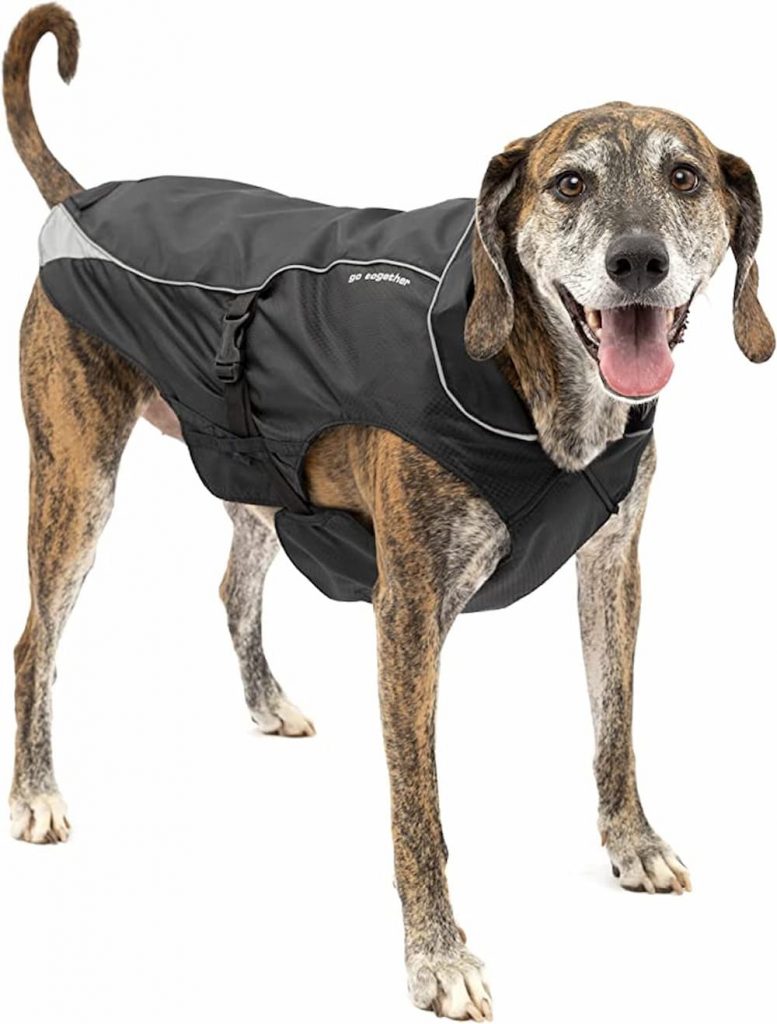
Small dogs are often more susceptible to the cold, and this fitted, high-performance coat is a great choice for keeping petite pups cozy, without weighing them down with extra bulk. The streamlined design boasts a water-resistant exterior and soft fleece-lined interior, plus adjustable sides for maximum flexibility and fit. The zippered opening provides easy access to your dog’s harness or collar, while adjustable, quick-release buckles on the sides provide maximum flexibility and fit while making off-and-on a snap. It even comes with reflective lighting and an LED strip to ensure your dog stays safe after dark.
Highlights
- Sturdy, water-resistant outer shell with fleece inner lining
- LED light for nighttime visibility
- Choose from six sizes and 3 colors
- Tapered fit ideal for small dogs and puppies
- Machine washable
Things to Consider
- Must remove LED light before washing
- Measure carefully to ensure the best fit
Best Waterproof Winter Dog Coat
Our Pick: WeatherBeeta Parka Deluxe Dog Coat
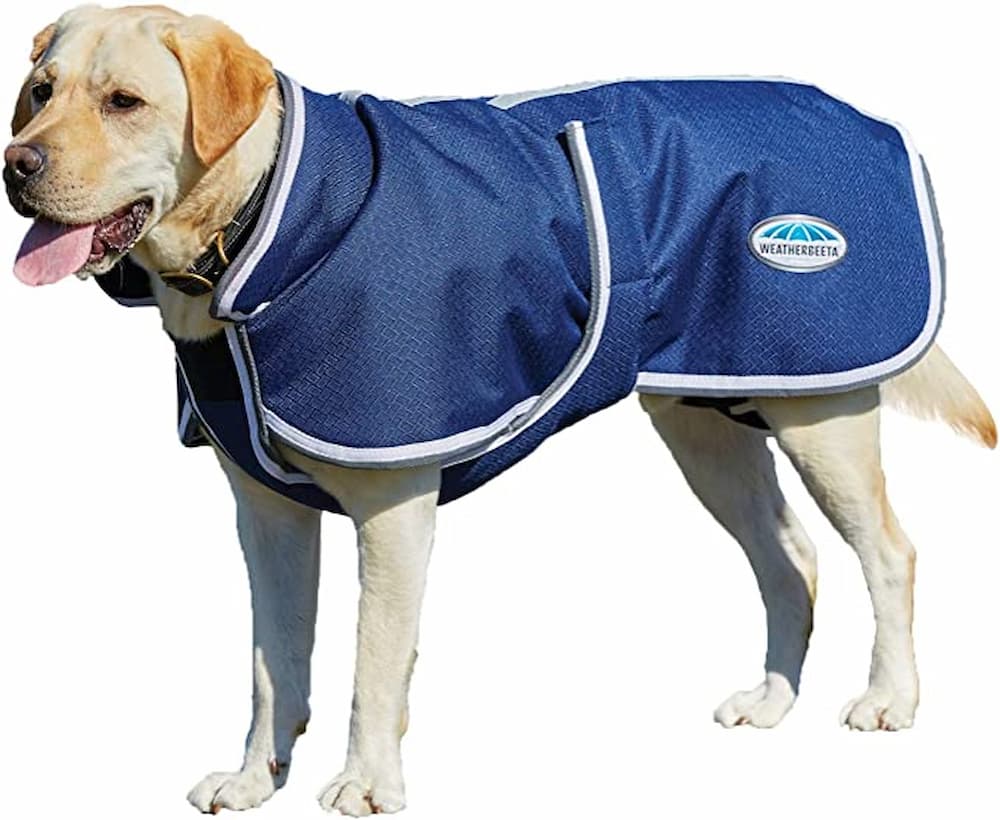
Not all dog coats are waterproof — but if your winter forecast calls for lots of snow or sleet, you’ll be happy you invested in this classic WeatherBeeta Waterproof Parka for your pup. Made from a tough 1200 denier triple weave fabric with a waterproof coating, this practical coat is ideal for wet weather. Its plush lining is filled with 220g padding for warmth, which makes it a great choice when it’s wet and cold. But it’s also breathable which helps keep your dog from getting overheated. The WeatherBeeta brand is also known for its top-quality horse rugs, so you know this waterproof dog coat for winter is really built to last.
Highlights
- Choose from 12 sizes and a range of color options
- Easy to put on
- Full chest and belly wrap
- Elasticized leg straps
- Reflective strips for visibility
Things to Consider
- Velcro closures may get dirty over time
- Not as fitted as some other coats
- Not suited for narrow-chested dogs
Best Heavy Duty Winter Dog Coat
Our Pick: Hurtta Extreme Warmer Winter Dog Coat
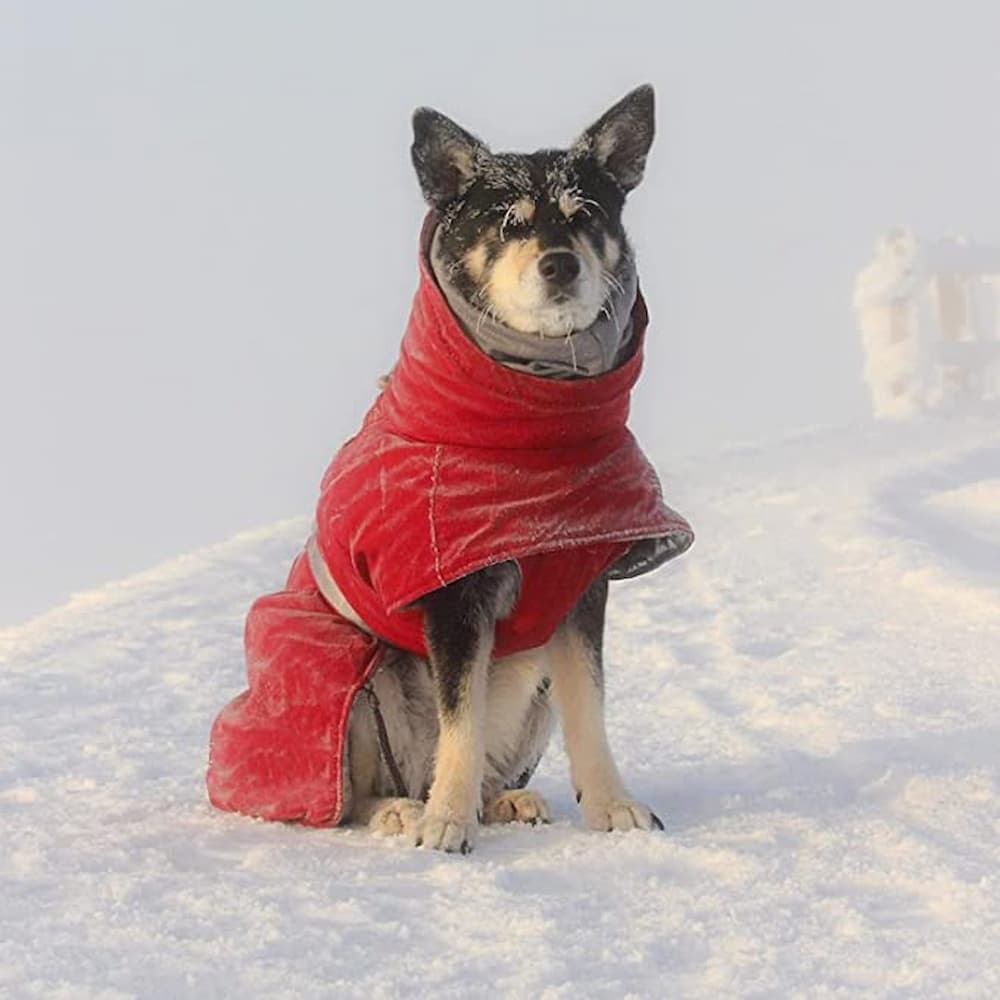
If your dog is extra sensitive to cold or you live somewhere with extremely cold winters, you may need to look for something a bit more protective than a standard dog winter jacket. That’s where Hurtta’s Extreme Winter Warmer really stands out as best-in-class because it’s significantly warmer than most. The thermal coat features a reflective foil lining (just like a self-heating dog bed) that’s designed to bounce your dog’s body heat back, keeping them toasty warm even on the coldest day. It also has a high collar and warming hood to guard your dog’s sensitive ears, plus a protective rear hem and an adjustable back length for the perfect fit.
Highlights
- Choose from three colors and nine sizes
- Covers approximately 80 percent of a dog’s body
- Outer shell repels water, inner foil lining reflects and retains body heat
- Reflective piping for better visibility
- Includes slit for attaching your dog’s leash to their harness
- ECO version features elements made from recycled and eco-friendly materials
Things to Consider
- More expensive than other winter dog coats
- May be too warm for double-coated breeds
- Hand wash only
Best Winter Dog Coat Splurge
Our Pick: Winter Dog Coat by Voyagers K9 Apparel
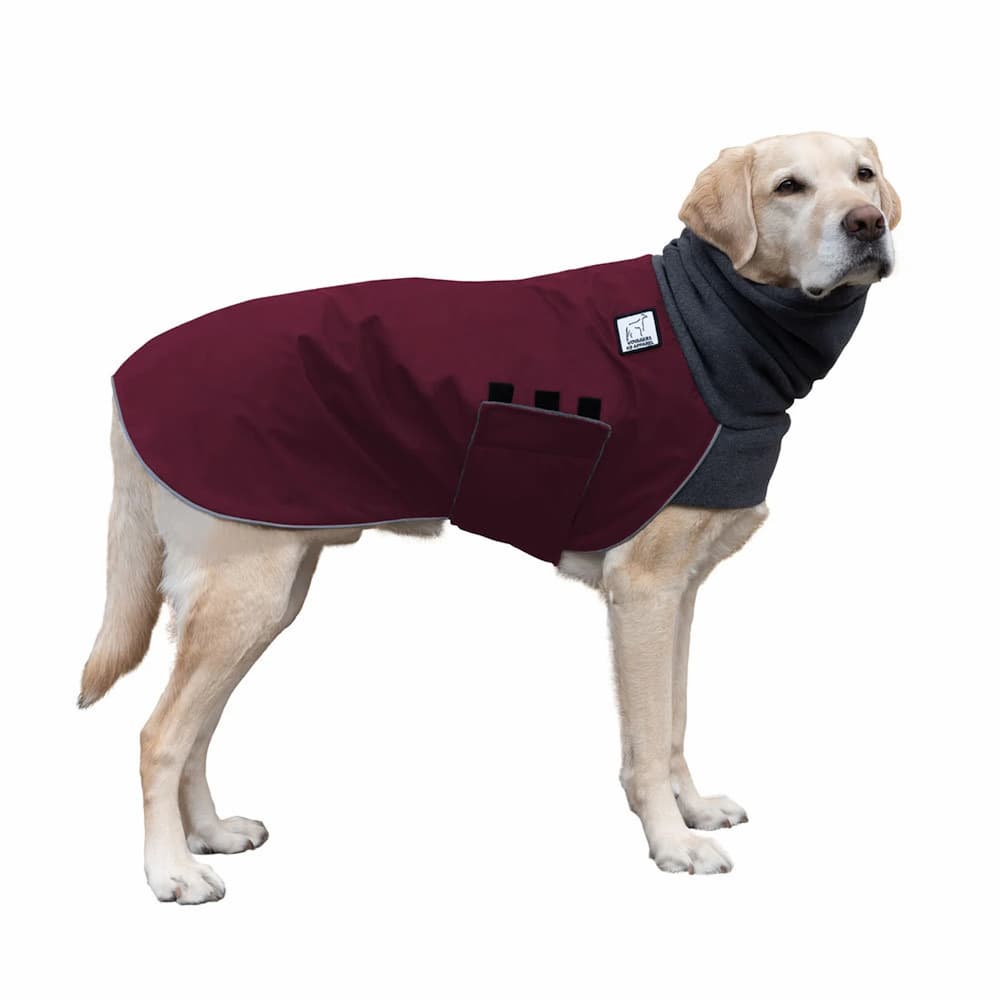
If you’re looking for a winter coat that’s built to stand the test of time and fit your dog like a glove, then this handmade doggie coat is the perfect choice. Offered in a wide range of options designed to fit specific dog shapes and breeds, this bespoke winter coat is extremely comfortable and offers a great range of movement. It also includes a snood that can be pulled up around your dog’s ears for even more protection! This coat has over 4,000 reviews and many customer photos so you can get a good idea of what to expect when you order.
Highlights
- Available for a huge range of breeds
- Waterproof nylon shell with warm fleece lining
- Adjustable hood
- Leash opening
- Choose from four colors
- Seller also creates custom coats for mixed breeds, by request
Things to Consider
- You’ll need to provide very detailed measurements
- Expensive — an investment piece!
Best Value Winter Dog Coat
Our Pick: Vecomfy Extra Warm Dog Winter Coat
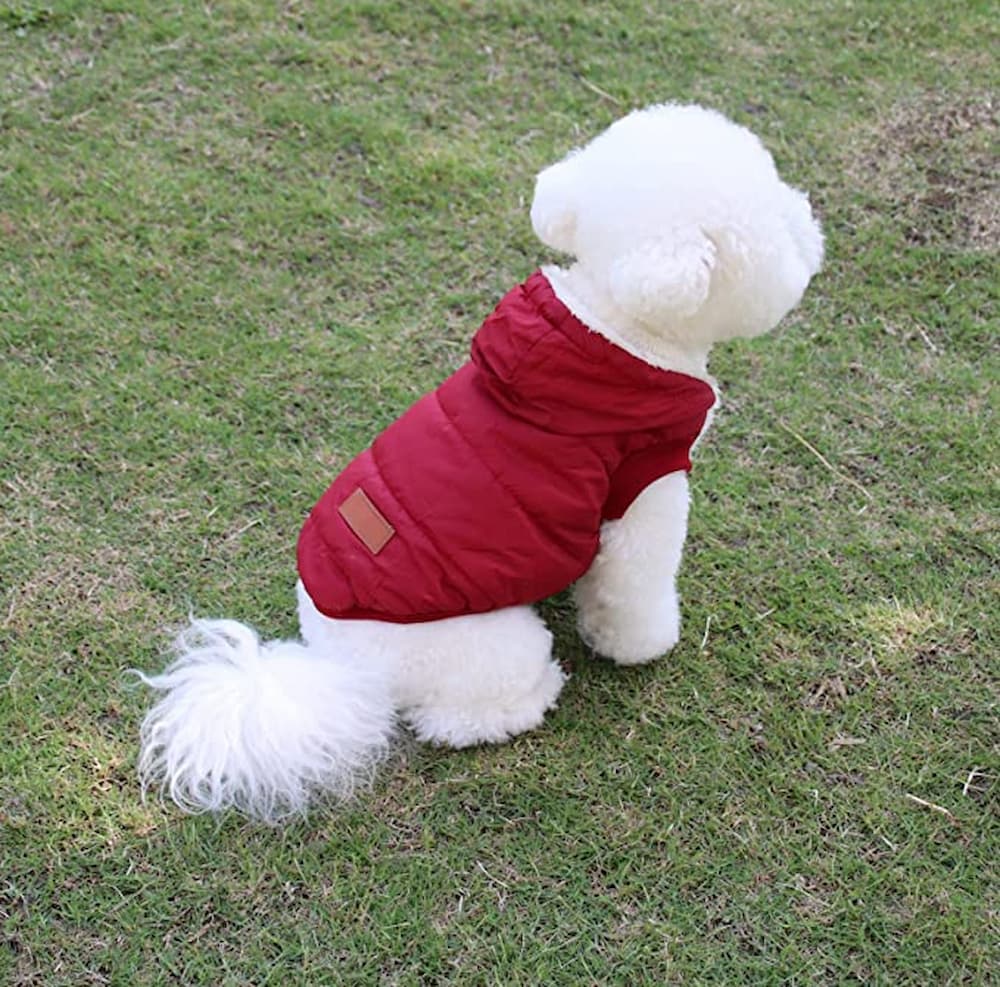
If you’re looking for a cozy dog coat for winter to keep your pup warm and toasty, but still want some money left over for doggy treats, then this budget-friendly dog coat is a winner. It’s made with a polyester outer, polyester filler, and a soft fleece lining for extra warmth. The cute hood can be pulled up to keep your dog’s ears warm, or folded back and attached to the jacket with the snap closure.
Highlights
- Washable
- Great customer reviews
- Excellent value for money
- Choose from 6 colors and 7 sizes
Things to Consider
- Not waterproof
Best Dog Puffer Jacket
Our Pick: Reddy Puffer Dog Vest
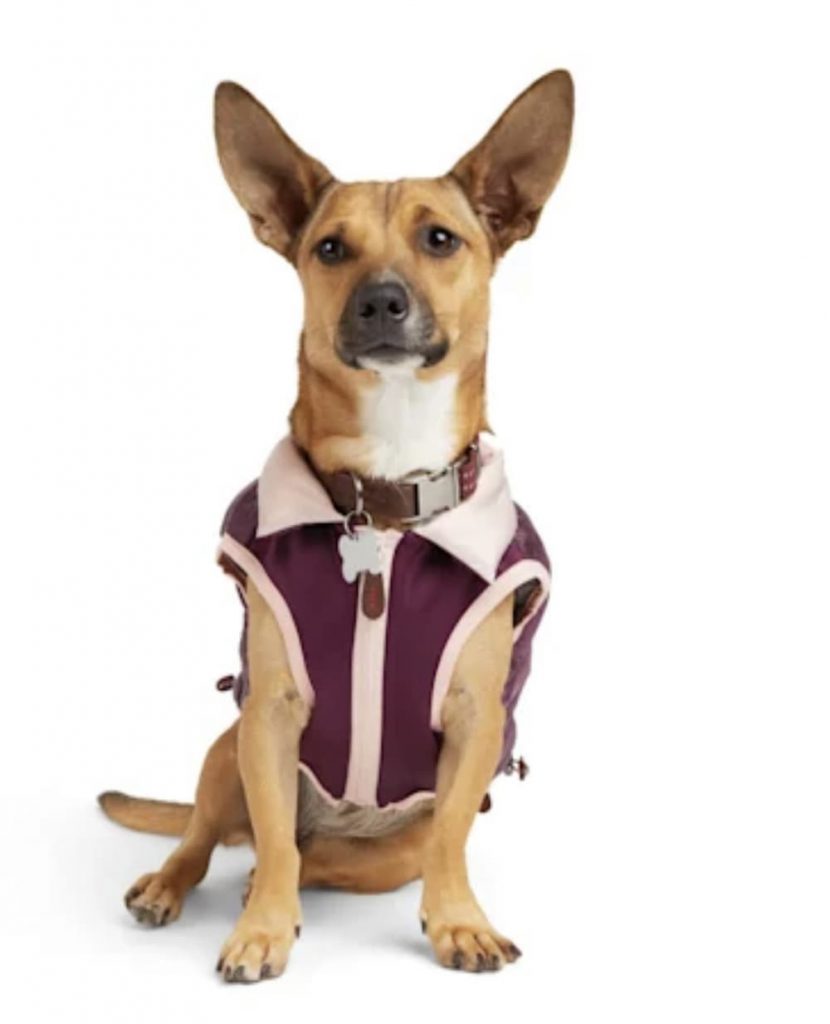
Keep your dog as snug as a bug in this adorable puffer jacket. Filled with high-quality, PrimaLoft insulation, this puffy dog parka is perfect for a cold, blustery day at the dog park. And if your pup gets too hot when you’re out and about, this is extremely lightweight and packs down to almost nothing, so can be easily stowed away. This puffer jacket is water resistant, but shouldn’t be used in very rainy or wet weather.
Highlights
- Choose from 8 sizes
- Other colors available
- Easy zip closure on belly
- Handy pocket on rear of jacket for treats (or poop bags!)
Things to Consider
- Relatively expensive
- No hole for attaching your dog’s leash to their harness
Winter Coats For Dogs Buying Guide
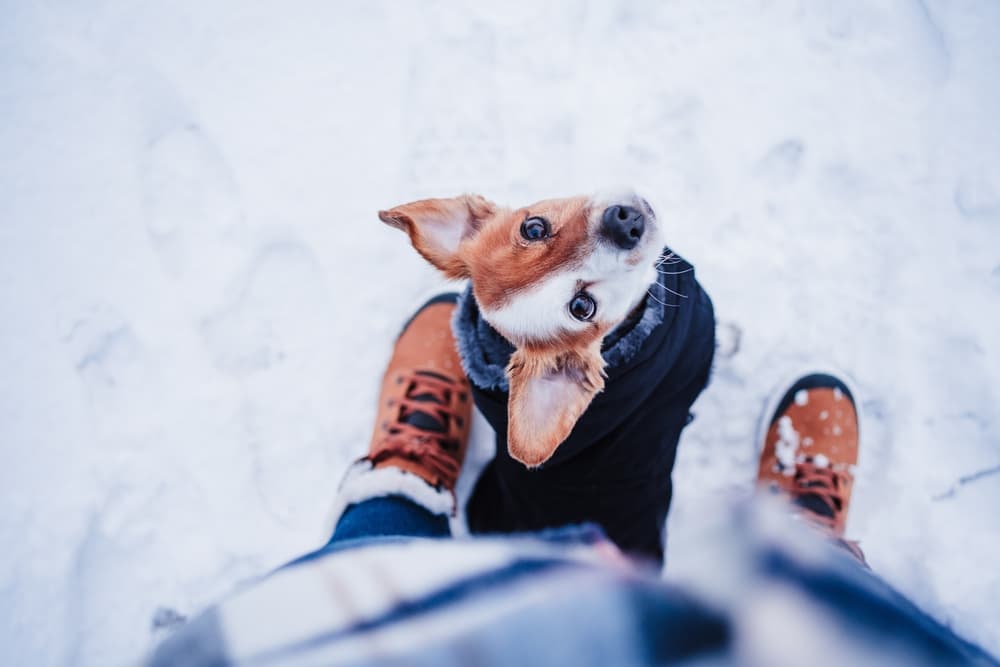
Any item your dog is going to wear needs a fair amount of consideration before you press that “buy now” button. Choosing a dog coat for winter really depends on your dog, your region, and the kinds of activities your dog will most likely engage in when the weather turns cold.
If you know the weather will be cold and wet, look for something that’s both insulated and waterproof. These are typically more “practical” coats that prioritize function over fashion. If winters are mild, your dog can wear something more lightweight. If in doubt, speak to your veterinarian, who’ll be able to provide advice for your individual dog.
No matter which type of coat for dogs you choose, taking the correct measurements to ensure a good fit is key. Always follow the sizing guidelines for the brand you’re interested in, as these can vary significantly. Use a soft fabric tape measure and record the measurements specified by the manufacturer — usually your dog’s chest and length, at a minimum.
For handmade coats, you may need to take more measurements for an accurate fit. It’s also worth reading reviews from customers to see if the coats are generally true to size.
If a coat is made with stretchy material, you’ll have a little sizing leeway, but for non-stretch coats made from canvas or a ripstop fabric, these may restrict your dog’s freedom of movement if they’re too small.
Dog Winter Coat Tips for Success
Once your pup’s new coat arrives, Trott suggests some short training sessions: “I’d recommend starting to get your dog accustomed to the winter gear before they need to wear it. It can be too much for a dog to put on a winter coat for the first time and keep it on for the duration of a walk.”
“Instead, start out with very short training sessions inside,” Trott advises. “You can put the coat on your dog, feed them a treat and remove the coat again right away. That way your dog can get used to the coat gradually and without being scared.”
Before long, you’ll both be heading out into the winter, feeling warm and ready for an adventure!

